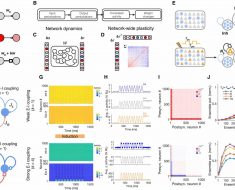MONDAY, Oct. 19, 2020 — For older adults, social engagement (SE) is associated with greater microstructural integrity of specific gray matter (GM) regions relevant to social cognition, which have roles in dementia, according to a study published online Oct. 19 in the Journal of Gerontology: Psychological Sciences.
Cynthia Felix, M.D., M.P.H., from the University of Pittsburgh, and colleagues estimated associations of SE with GM microstructure in regions of interest (ROIs) relevant to social cognition in community-dwelling older adults. The associations between SE index and mean diffusivity (MD) of GM ROIs on diffusion tensor imaging were examined and adjusted for age, race, gender, and education.
The researchers observed a significant association between higher SE and lower MD (greater gray matter microstructural integrity) in the left middle frontal gyrus-orbital part, left caudate nucleus, left temporal pole-middle temporal gyrus, right middle frontal gyrus, right superior frontal gyrus-orbital part, and right middle frontal gyrus-orbital part, after adjustment for demographic attributes. The associations were robust to adjustment for hearing or difficulties in activities of daily living. For some ROIs, there was significant effect modification by gender, with associations seen for women only.
“I believe our findings are particularly important right now, since a one-size-fits-all social isolation of all older adults may place them at risk for conditions such as dementia,” Felix said in a statement. “Older adults should know it is important for their brain health that they still seek out social engagement in safe and balanced ways during the pandemic.”
Abstract/Full Text (subscription or payment may be required)
Source: Read Full Article





